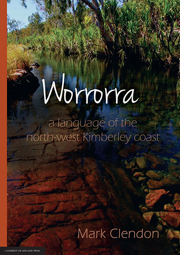Book contents
- Frontmatter
- Dedication
- Contents
- List of tables
- List of figures
- Abbreviations
- Acknowledgements
- Chapter One introduction
- Chapter Two segmental phonology
- Chapter Three morphophonology
- Chapter Four nouns and noun classes
- Chapter Five indicative mood and basic verbal morphology
- Chapter Six adjectives and inalienable nouns
- Chapter Seven pronouns, demonstratives, anaphors, deictics
- Chapter Eight optative, counterfactual and exercitive moods
- Chapter Nine number
- Chapter Ten adverbs and postpositional phrases
- Chapter Eleven complex predicates
- Chapter Twelve experiencer constructions
- Chapter Thirteen objects and possession
- Chapter Fourteen complement clauses
- Chapter Fifteen subjunctive verbs
- Chapter Sixteen middle voice
- Chapter Seventeen discourse cohesion
- Chapter Eighteen kinship terms
- Appendices
- References
Chapter Six - adjectives and inalienable nouns
Published online by Cambridge University Press: 05 October 2014
- Frontmatter
- Dedication
- Contents
- List of tables
- List of figures
- Abbreviations
- Acknowledgements
- Chapter One introduction
- Chapter Two segmental phonology
- Chapter Three morphophonology
- Chapter Four nouns and noun classes
- Chapter Five indicative mood and basic verbal morphology
- Chapter Six adjectives and inalienable nouns
- Chapter Seven pronouns, demonstratives, anaphors, deictics
- Chapter Eight optative, counterfactual and exercitive moods
- Chapter Nine number
- Chapter Ten adverbs and postpositional phrases
- Chapter Eleven complex predicates
- Chapter Twelve experiencer constructions
- Chapter Thirteen objects and possession
- Chapter Fourteen complement clauses
- Chapter Fifteen subjunctive verbs
- Chapter Sixteen middle voice
- Chapter Seventeen discourse cohesion
- Chapter Eighteen kinship terms
- Appendices
- References
Summary
In undertaking an act of reference, a speaker must fulfil at least two conditions (Searle 1969, Silverstein 1986); the first consists of denoting a type of referent, and the second of identifying a particular instance of such a type. A nominal expression therefore includes a simple noun as well as some referential extension of it, in order to pick out, among all the instances of a particular denotatum that may exist in the world, just which instance or set of instances may be uniquely intended. Extensions of this sort are typically created by way of co-reference, which consists of a relationship between a word used to denote a type of thing in the world, and other words or morphemes that are dependent upon it for their referential value.
In this chapter and elsewhere the term ‘noun phrase’ or ‘NP’ will be used fairly informally to refer to any nominal expression, the tokens of which depend for their reference on a noun (lexical or derived) acting as the syntactic head of that expression. The literature on non-configurationality, discontinuous NPs and constituency generally in Australian languages is considerable (see, eg, Austin & Bresnan 1996 and references therein), and no more than a rather loose and informal characterization of this phrase type will be attempted here.
In Worrorra, agreement morphology is used to signal coreference. In this chapter we will look at adjectives and other more or less adjective-like or nominal expressions, and particularly at the ways in which agreement occurs between head nouns and their referential extensions. As Nichols (1986:57- 58) puts it, ‘the function of the morphology of government, agreement, cross-reference etc, is to identify syntactic relations by appropriately marking either the head … or the dependent.’
- Type
- Chapter
- Information
- WorrorraALanguage of the North-West Kimberley Coast, pp. 128 - 153Publisher: The University of Adelaide PressPrint publication year: 2014



